🌎 Chart of the Day #2
For over 5 years, HolonIQ has been visualizing the global impact economy. Now, with more than 1 million charts on Climate Tech, Education, Healthcare, and the Global Economy, we're kicking off 2024 with a new daily newsletter for data-driven global leaders who want to understand trends in strategic industries.
Today's Topics
- 💰 EdTech VC. $3B of EdTech VC in 2023. Q423 lowest in 10 years.
- 🚗 EV Critical Minerals. EVs use 6X more critical minerals than ICE.
- 💊 Medicine Shortage. Drug shortages persist in the US.
Have feedback or ideas for us? Email hello@holoniq.com — we'd love to hear from you!
💰 $3B of EdTech VC in 2023. Q423 lowest in 10 years
In 2023, Global EdTech Venture Capital experienced a significant downturn, with an estimated total of $3B to the end of the year, marking a 72% decrease from the previous year. Both India and China faced similar trends with significantly reduced investments from Venture Capital. Notably, there were no venture capital deals in the education sector surpassing $100 million this year and only nine VC deals between $50-$100M compared to 25 in the same period last year.
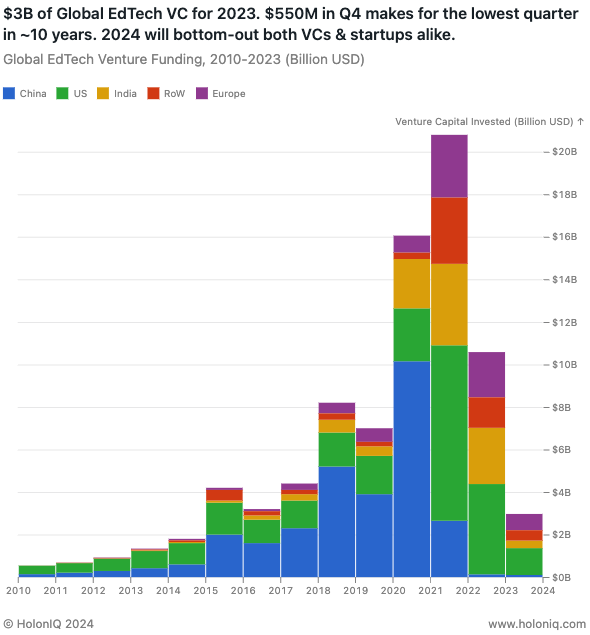
Source: HolonIQ
🚗 EVs use 6X more critical minerals than ICE
Battery Electric Vehicles (EV) require a broader mix of minerals compared to conventional Internal Combustion Engine (ICE) vehicles, including, on average, over 60 kilograms of graphite and nearly 40 kilograms of nickel per vehicle. Battery EVs also require varying quantities of lithium, cobalt, nickel, graphite, and rare earths, which conventional vehicles do not. Manganese and copper are required for both conventional vehicles and battery EVs, however, they are used twice as much for battery EVs.
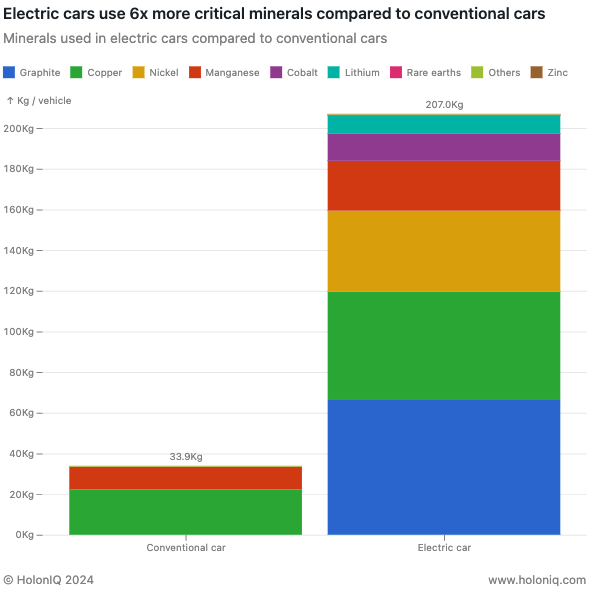
Source: IEA
💊 Drug shortages persist in the US
Drug shortages in the US have always been a predominant issue. Since the early 2000s, the proportion of injectable drug shortages has rarely fallen under 40%. Supply chain resiliency has been tested quite severely by the COVID-19 pandemic. Moreover, a resilient supply chain is a must to handle the ongoing drug and device shortage across the world, which has deteriorated rapidly since 2020. As such, many nations worldwide are taking initiatives to establish more robust supply chains to avoid similar situations.
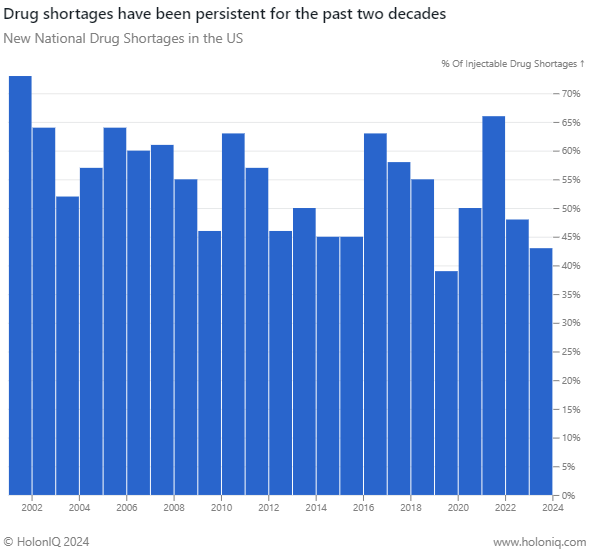
Source: University of Utah Drug Information Service
Check Out Yesterday's Chart of the Day
🎓 <10% of US Higher Education will be fully 'on-campus' by 2030.
Higher Education is riding a digital rollercoaster. The pandemic accelerated a strategic shift to online learning and while many Universities around the world are adjusting back to something resembling pre-pandemic patterns, AI and a long-term digital transformation are powering massive expansion in hybrid programs.
Post-pandemic data from the NCEE in the US already points to the ongoing decline of pure 'on-campus' programs that include no online components or courses. HolonIQ's forecast for 2030 expects 'On-Campus' enrollments to decline to less than 10% of the total with Hybrid accounting for more than 10M, more than 50% of all programs.
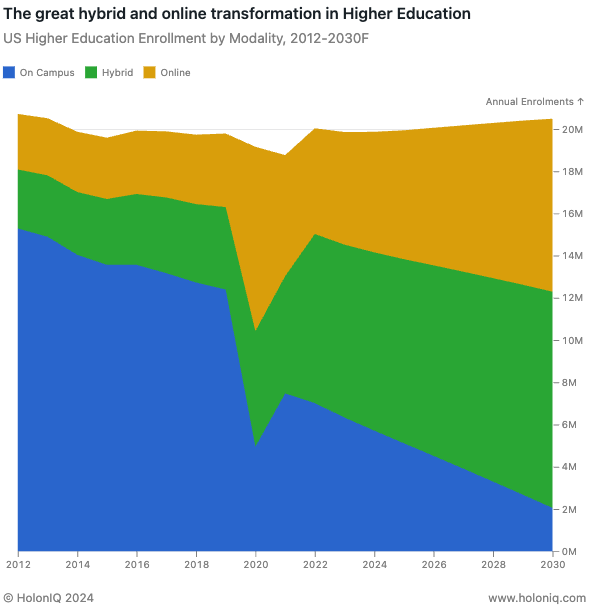
📦 Micro-credentials are on the rise.
We've seen huge demand for data and insights on Micro-Credentials over the past 5+ years, also evident in Google's Search Trends. The violent shift to digital at the start of the pandemic accelerated interest which has steadily advanced.
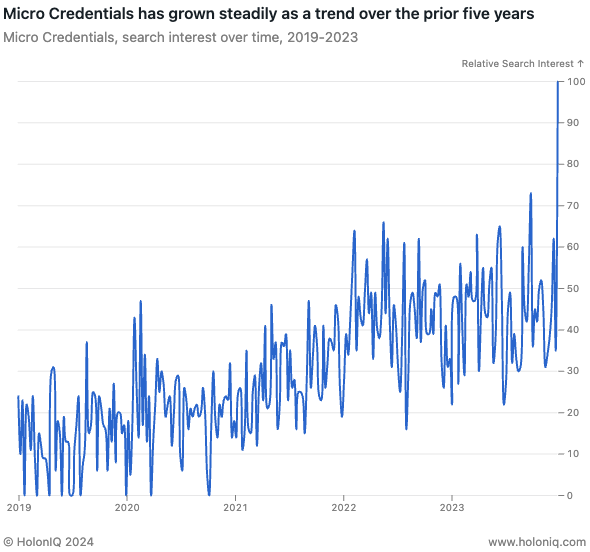
⚕️Most Europeans are satisfied with Telehealth.
The majority of patients across Europe indicated that telemedicine effectively met their healthcare needs, with complete satisfaction levels ranging from 32% to 66.9%. Notably, countries such as France, Cyprus, Denmark, and Finland reported particularly high satisfaction rates, emphasizing the integral role telemedicine played in fulfilling diverse healthcare requirements amidst the challenges posed by the COVID-19 pandemic.
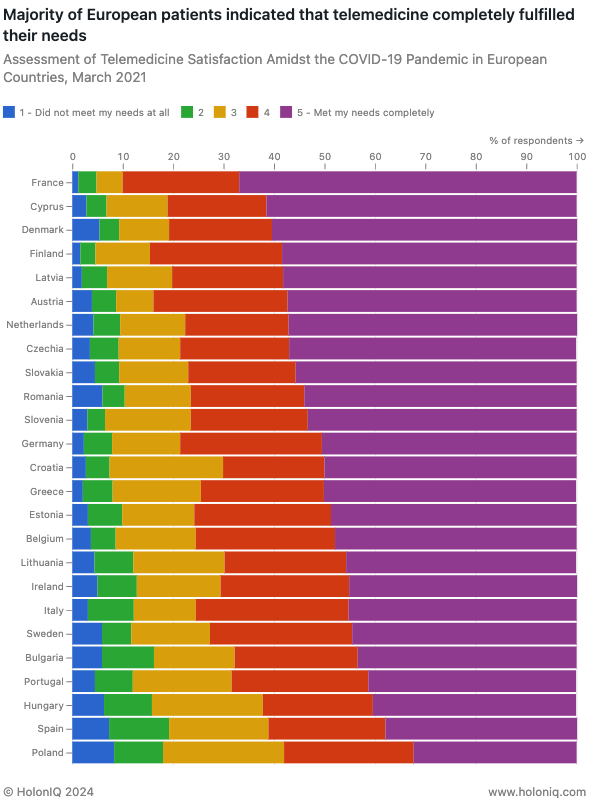
Source. HolonIQ, Eurofound
🚙 ~50% of Electric Vehicles are SUVs
Small EVs still have a pretty decent jump in price over an Internal Combustion Engine (ICE) small car. The battery pack costs a lot. But Trucks and SUVs are already quite expensive, and the larger overall size means adding the additional battery pack (for closer range parity with an ICE vehicle) isn't as hard to do.

Source. HolonIQ, IEA
📖 5000 years of Civilization
Drawn from consensus academic history, check out the evolution of civilization.
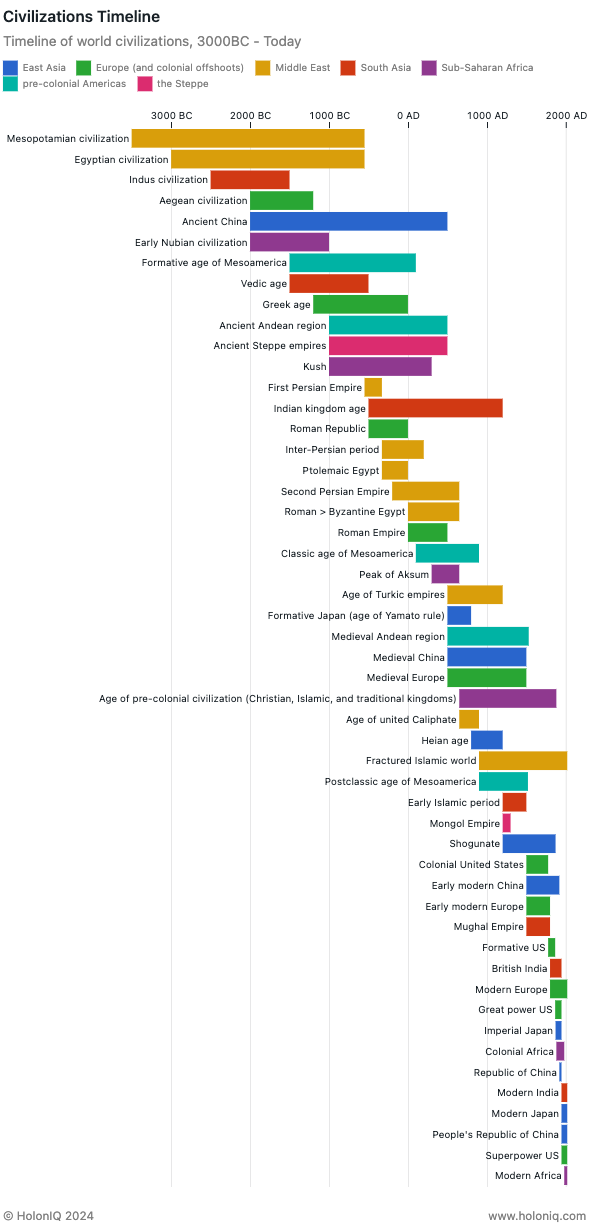
Thanks for reading. Have a great week ahead!
Have some feedback or want to sponsor this newsletter? Let us know at hello@holoniq.com
